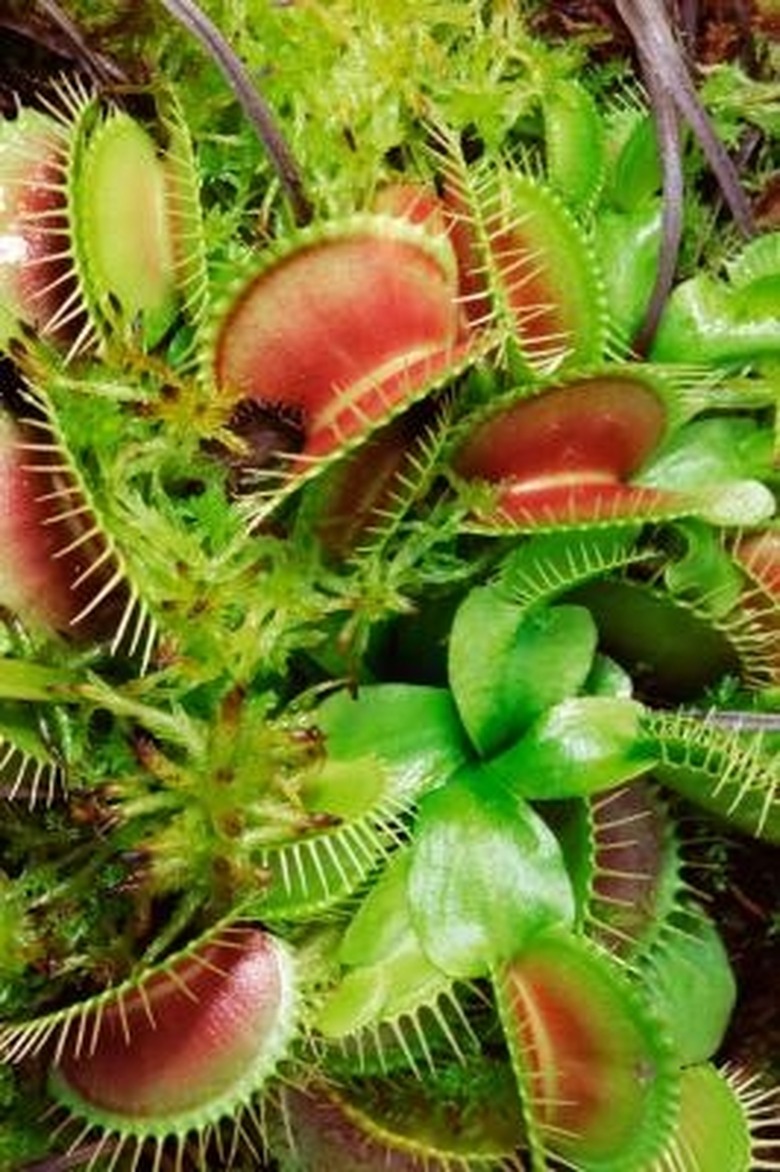Unusual Adaptations Of Plants
Step 1
Carnivorous plants are plants that trap and consume protozoans or animals, like insects or other forms of arthropods. These types of plants developed this mechanism to compensate for the poor nutrients in the places they grow; places such as rock outcroppings and acidic bogs. There are two categories of carnivorous plants: those with active traps and those with passive traps. Examples of this class of plants are the Venus fly trap and the pitcher plant.
Plants that "Resurrect"
Step 1
The resurrection fern is a classic example of a plant that seems to die only to revive at a later time. This ability to appear dead and to resurrect is simply a survival mechanism or an adaptation for survival. The resurrection fern appears dry and lifeless in hot, dry weather as a defense against heat and drought. It becomes lush and green once again within hours of the first appearance of rainfall.
Step 2
- Carnivorous plants are plants that trap and consume protozoans or animals, like insects or other forms of arthropods.
- The resurrection fern is a classic example of a plant that seems to die only to revive at a later time.
Plants that Mimic Insects
Step 1
Some plants have developed an elaborate adaptation that allows them to produce flowers that look like insects. Some orchid species produce flowers that look like insects, as such they are referred to as fly orchids, spider orchids and bee orchids. This adaptation is simply a mechanism that enables the plants to attract male insects, which pollinate the flowers as they attempt to copulate with the fake insects.
Smelly Plants
Step 1
Some plants produce flowers that smell foul instead of the sweet fragrance normally associated with flowers. Some of these types of flowers are known as carrion flowers because they look flashy and bright, but smell terrible. This is an adaptation by this group of plants to attract insects like blow flies, which help pollinate the plants.
Stone Plants
Step 1
These interesting plants look like stones or pebbles that are usually found in their natural habitat. This adaptation is a survival technique that the plants have developed to fool insects and mammals that prey on them into thinking that they are stones. Some of the animals that prey on the stone plants, or lithops, include the bush cricket and the cape ground squirrel.
Step 2
- Some plants have developed an elaborate adaptation that allows them to produce flowers that look like insects.
- This adaptation is simply a mechanism that enables the plants to attract male insects, which pollinate the flowers as they attempt to copulate with the fake insects.
Plants that Move
Step 1
Some plants actually seem to move in response to stimuli. These plants are known as sensitive plants and have developed this adaptation that they use under certain circumstances. The leaves of the sensitive plants seem to wilt when touched, or when the heat is intense. This defense helps minimize damage from predators and to protect them from drying out when the heat from the sun is too much.

